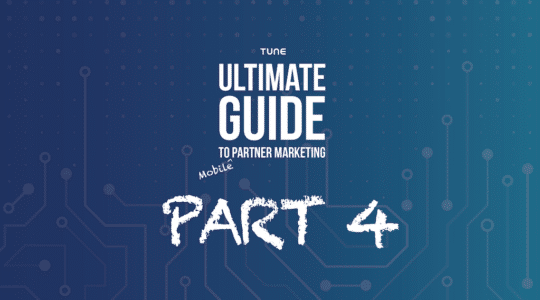
Keeping the lines of communication open with your affiliates can be what makes or breaks your affiliate program, and that doesn’t mean just sending a newsletter every other week telling them about the “new offers” you just activated. If you really want to work with great affiliates, you’ve got to put some time into it and really build relationships. It might seem like a no-brainer, but really understanding how affiliates like to be communicated with and what lines of communication they prefer will get you ten steps closer to finding that magical 2% who will unlock incredible revenue and volume for your business.
Instant Messenger:
Affiliates use various IM services to do the majority of their communication with networks, affiliate managers, other affiliates, friends, children, pets… okay maybe not that many other affiliates. Seriously, I’m amazed at how much affiliates would rather communicate via IM than to pick up the phone. If you’re serious about building your affiliate program you better spend some time building up your contacts on AOL Instant Messenger (yes, somehow still the most popular among affiliates) as well as Gchat, ICQ, and Skype. Affiliates love the ability to just select your IM handle and start chatting about their needs at any time, so the more you make yourself available or at least have someone available, the better. In some affiliate platforms such as HasOffers, you can set up an AIM handle with your account so that affiliates can see when you’re online and chat directly with you through your affiliate program’s interface.
Email:
You might have stumbled on a post I did previously about the Do’s and Don’ts of Mass Emailing Affiliates. If not, make sure you give it a read. It goes over the basics of sending regular communications to your affiliates, making sure you’re being helpful rather than annoying. Effective newsletters and updates are all about targeting as well. Make sure you use a system like the mail room that can send emails to affiliates running certain offers or to affiliates assigned to specific affiliate managers or payout tiers. This way you can reduce the amount of noise you’re sending and make sure the right affiliates are getting the information they need.
Beyond sending newsletters, updates, and offer emails, you need to stay on top of your one-to-one email communication with affiliates. Depending on where you’re affiliates are located, this can be a challenge and I would even recommend utilizing an email support system like ZenDesk or Assistly. This way your affiliates receive an immediate response to their inquiry, receive a ticket number they can track, and you have the ability to easily manage their requests. For smaller affiliate programs, you can get the basic package with access for one user, either for free or a very reasonable price.
Forums:
Depending on the types of publishers and affiliates you’re working with, forums can be an excellent place to interact. However, be warned that some affiliates can be extremely opinionated as well as crass and rude on forums. If you plan to engage with affiliates on forums, you need to have thick skin to put up with lots of rants and even attacks. You need to approach them with the attitude that it’s “all in good fun.” If you’re engaging on public forums, you need to be extremely transparent with the entire affiliate community. Be prepared to get called out on any statement you post and be willing to engage in forum combat at any time. If you don’t have one or more people with the appropriate time devoted to affiliate management, I would recommend leaving the forums alone and connecting with affiliates through other mediums.
Twitter:
The social media phenomenon of 140 characters is really starting to catch on with affiliates. I think it’s becoming more popular with affiliates because they can still maintain an anonymous handle (unlike Facebook), and can simply watch and engage when they choose to. I would recommend making your affiliate program available on twitter with a separate company handle, allowing affiliates to follow your handle for updates and other news that you’re also sending via email. When affiliates do follow your handle, make sure to follow them back so that they can DM (direct message) your account and send you private messages. When affiliates have complaints, it’s best to engage them via DM if possible, rather than through public tweets.
Running a twitter handle for your affiliate program should be similar to running any customer service system. Take notes from the best like @comcastcares and @zappos, who are masters at engaging with customers, addressing concerns, and building new business. The goal of your twitter account is to create another line of open communication, provide news and updates, respond to affiliate inquiries, and seek out new affiliate relationships.
Facebook:
In general, I’m receiving loads of Facebook friend requests from people in affiliate marketing these days. Though, I don’t like the idea of my entire account turning into another LinkedIn profile, I can see how Facebook could be an excellent way to communicate with affiliates. More and more affiliates seem to be comfortable creating profiles using their real personal information and communicating with colleagues and affiliate managers through Facebook’s ever developing messaging system. However, you must realize that Facebook is a very different line of communication. If you choose to engage with affiliates directly through your personal account, be prepared for it to take over your wall. You also have the option of communicating through the Facebook page of your business like this one for HasOffers, but then you loose much of the personal touch that affiliates enjoy. Choosing to use Facebook for your affiliate program is certainly a big decision and one that should not be taken lightly. Keep in mind, you only get one personal page for Facebook since they forbid the use of multiple user accounts in their ToS.
Phone and SMS:
I always recommend that you talk to new affiliates at least once on the phone. If you don’t have time to talk to everyone, make sure you call those that do high volume for your program. This helps both parties get more comfortable with each other and begins to build trust. As you progress with some of your more successful affiliates you may want to do regular check-ins to see how they are doing and give them added attention. I’ve even seen affiliate managers develop texting (sms) relationships with their affiliates, which can be fun and obviously a great way to build long lasting friendships. I would not recommend contacting a large number of your affiliates this way, but it can be a fun way to give special attention to your best performers. Again, this is certainly going above and beyond the call of duty.
Direct Mail:
Do not spam your affiliates with direct mail to their residencies or PO boxes. You’re wasting your money by printing communication with people that spend their entire lives online. With that said, a holiday card, a gift, big news about a launch or update will be welcomed by your affiliates. Keep these down to a few a year. Even gifts can get annoying and if you send them all the time they lose their value. Just make sure that direct mail is always personal and fun.
In Person:
I can’t stress how important it is to actually meet your top affiliates face to face. If that means meeting up at Affiliate Summit, AdTech, another industry conference or just flying them to your headquarters for the day, nothing will help get you on the same page faster. However, do not think for a second that this face time or any trip you book for them will keep them with you forever. You must keep working hard to make your affiliate offers relevant to them, your payouts competitive, and your communication open. At the end of the day, your affiliates are running a business and need to make sure they’re making the most money from their traffic as possible.
Whether you’ve heard it before or not, I’ll say it again: affiliate marketing is all about relationships. These different lines of communication are ways you can choose to develop those relationships. Depending on your availability and style of business, choose the communication lines that work best for you and do them well. If you can’t give each one adequate attention, then cut it down to fewer options until you really have the time to run a twitter handle or engage in forums. Don’t bite off more than you can chew, but at the very least you need to have hours of availability on AIM and fast response time via email. Start there and grow your communication with affiliates from there. Please feel free to leave questions or comments below.
Author
A digital marketer by background, Peter is the former CEO of TUNE, the enterprise platform for partner marketing. In 2018, he sold TUNE’s mobile measurement product to Branch, unifying measurement and user experience. He led TUNE’s efforts to bring better management technology and automation to marketing partnerships, across affiliates, influencers, networks, and business development relationships. Follow @peterhamilton



Hi Peter,
I found your article very interesting. I recommend
another customer support tool HappyFox. It integrates with
your email account and converts incoming requests into tickets, which
can assigned to right people. It is economically priced and is light on
your wallet. Give it a shot !